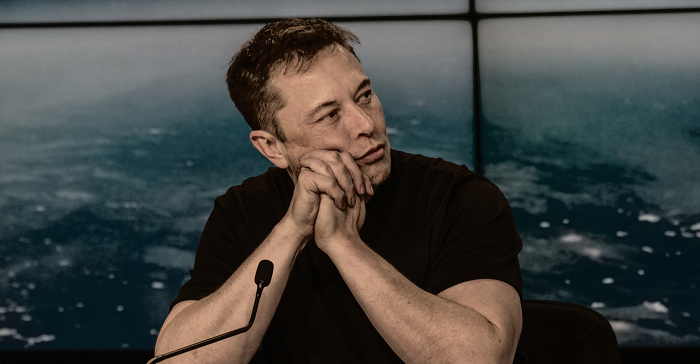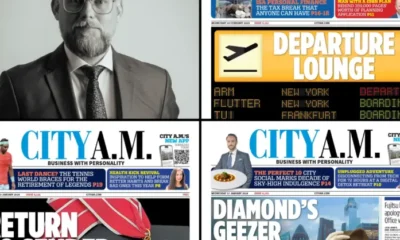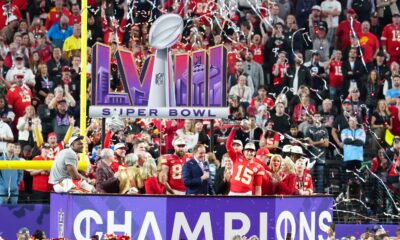SOCIAL
Elon Musk Looks to Exit his Twitter Takeover Deal – So What Now?

Elon Musk’s out, so what comes next for Twitter?
That’s the question that everyone’s asking following Musk’s letter to the SEC late Friday, in which Musk’s team advised that they’re moving to terminate his $44 billion takeover offer for the app.
The core issue, according to Musk and Co., is that Twitter’s claim that only 5% of its active users are fake or spam accounts cannot be definitively proven, and without such evidence, Musk’s team is concerned that the material value of the app is far lower, because you can’t derive expanded value from bots.
If Musk were to, say, make eCommerce a bigger focus in the app, the potential of such a shift is relative to how many real users, spending real money, you can actually reach. In this sense, Musk is right to question Twitter’s data – but the problem is that there’s no perfect way to measure fake accounts, so while Twitter is standing by its figures, there’s not really a means for Musk to counter such, other than via anecdotal examples.
Which Musk has tried, while Twitter has also given Musk all of the internal data access that it can, to enable Musk’s team to make their own assessment.
Evidently, that hasn’t helped to clarify the situation, so now Musk is looking to walk away from the deal entirely, which could see things go one of three directions.
- Musk walks away from the deal, and pays Twitter a $1 billion break fee. Within the original terms of the deal, Musk agreed to a $1 billion charge if he opted out of the deal at any stage. That’s the minimum that it would cost Musk to exit the proposal – though many have also noted that it could be difficult for Musk to abandon the deal entirely, because he waived several due diligence measures within his original proposal, in order to hasten the Twitter deal. That could see Musk held to his original $44b offer regardless of any change of heart that he might have, while there are also some legal scenarios in which Musk would be forced to pay billions in costs to Twitter if he were to end the arrangement – though the specific amount of such would have to be determined by a court. Either way, Musk pays up, then leaves Twitter behind.
- Musk is forced to buy Twitter due to waivers in the original contract. As noted, some market watchers maintain that Musk will be forced to buy Twitter either way, due to the aforementioned waivers in the deal, though Musk’s team maintains that they negotiated access and information rights within the original Merger Agreement so that they could review key data and information before financing and completing the transaction. The legalities of this aspect could become the key element of a legal push by Twitter’s board, which has vowed to hold Musk to his original offer.
- Musk agrees to buy Twitter at a lower price. Another possibility is that Musk still buys Twitter, but at a lower price point, with this latest push being a tactic to bring down the offered price. Musk’s original $44b offer values Twitter at $54.20 per share (Musk, if you haven’t heard, loves references to ‘420’), which is significantly higher than the current $37 per share that TWTR stock is trading at. Maybe, by threatening to abandon the deal, that could prompt a renegotiation, which may still see Musk become the Tweeter in chief.
These are the three potential outcomes right now, all of which will cost Musk money – and none of which is particularly good for Twitter, which has already begun readying for the Musk era, by switching up growth strategies, slimming down its executive ranks and pumping out in-progress feature updates ahead of any shift.
Those decisions have also formed part of Musk’s pushback, with Musk and Co. noting that Twitter has made significant operational changes since the deal was offered, which alters the make-up of the company, and what Musk is paying for.
Twitter would argue that these changes are within normal business operations, but Musk’s team has flagged these as another element that it could use to extricate Musk from the deal.
And while abandoning the deal will ultimately cost Musk, from a financial perspective, this element has also been questioned, with a more technical market theory also floating around that Musk never intended to buy Twitter at all, and that he was simply using his Twitter bid as a means to sell off his Tesla options that were set to expire.
Musk sold $8.5b of Tesla stock to fund his Twitter takeover bid, which he would have had trouble doing without a plausible reason for such a sell-off. Now, Musk could exit the Twitter bid, pay the break fee, and pocket $7.5b. That seems like a big gamble, and a very public one at that, but if anyone had the audacity to pull it off…
So what comes next?
We either see a renegotiation, a legal battle of unknown outcome, or Twitter accepts the $1b break fee and moves on.
The latter could be very difficult, with the value of the company now significantly impacted by the Musk push, and the subsequent questions raised by him abandoning the deal. But it may also be the safest route for Twitter to take – unless it can swallow shaving billions off the original sell-off amount.
Because Musk’s team may well have solid legal footing, and Elon can afford the protracted legal battle that may result, especially given his Tesla options sell-off.
I mean, the prospect of a protracted legal battle doesn’t seem to be very daunting to Elon right now.
Can Twitter prove, definitively, that bots and spam make up only 5% of its active accounts? Does it have to?
It could take many months to establish the answers here, which will make things increasingly uneasy at Twitter HQ.
SOCIAL
Snapchat Explores New Messaging Retention Feature: A Game-Changer or Risky Move?

In a recent announcement, Snapchat revealed a groundbreaking update that challenges its traditional design ethos. The platform is experimenting with an option that allows users to defy the 24-hour auto-delete rule, a feature synonymous with Snapchat’s ephemeral messaging model.
The proposed change aims to introduce a “Never delete” option in messaging retention settings, aligning Snapchat more closely with conventional messaging apps. While this move may blur Snapchat’s distinctive selling point, Snap appears convinced of its necessity.
According to Snap, the decision stems from user feedback and a commitment to innovation based on user needs. The company aims to provide greater flexibility and control over conversations, catering to the preferences of its community.
Currently undergoing trials in select markets, the new feature empowers users to adjust retention settings on a conversation-by-conversation basis. Flexibility remains paramount, with participants able to modify settings within chats and receive in-chat notifications to ensure transparency.
Snapchat underscores that the default auto-delete feature will persist, reinforcing its design philosophy centered on ephemerality. However, with the app gaining traction as a primary messaging platform, the option offers users a means to preserve longer chat histories.
The update marks a pivotal moment for Snapchat, renowned for its disappearing message premise, especially popular among younger demographics. Retaining this focus has been pivotal to Snapchat’s identity, but the shift suggests a broader strategy aimed at diversifying its user base.
This strategy may appeal particularly to older demographics, potentially extending Snapchat’s relevance as users age. By emulating features of conventional messaging platforms, Snapchat seeks to enhance its appeal and broaden its reach.
Yet, the introduction of message retention poses questions about Snapchat’s uniqueness. While addressing user demands, the risk of diluting Snapchat’s distinctiveness looms large.
As Snapchat ventures into uncharted territory, the outcome of this experiment remains uncertain. Will message retention propel Snapchat to new heights, or will it compromise the platform’s uniqueness?
Only time will tell.
SOCIAL
Catering to specific audience boosts your business, says accountant turned coach

While it is tempting to try to appeal to a broad audience, the founder of alcohol-free coaching service Just the Tonic, Sandra Parker, believes the best thing you can do for your business is focus on your niche. Here’s how she did just that.
When running a business, reaching out to as many clients as possible can be tempting. But it also risks making your marketing “too generic,” warns Sandra Parker, the founder of Just The Tonic Coaching.
“From the very start of my business, I knew exactly who I could help and who I couldn’t,” Parker told My Biggest Lessons.
Parker struggled with alcohol dependence as a young professional. Today, her business targets high-achieving individuals who face challenges similar to those she had early in her career.
“I understand their frustrations, I understand their fears, and I understand their coping mechanisms and the stories they’re telling themselves,” Parker said. “Because of that, I’m able to market very effectively, to speak in a language that they understand, and am able to reach them.”Â
“I believe that it’s really important that you know exactly who your customer or your client is, and you target them, and you resist the temptation to make your marketing too generic to try and reach everyone,” she explained.
“If you speak specifically to your target clients, you will reach them, and I believe that’s the way that you’re going to be more successful.
Watch the video for more of Sandra Parker’s biggest lessons.
SOCIAL
Instagram Tests Live-Stream Games to Enhance Engagement

Instagram’s testing out some new options to help spice up your live-streams in the app, with some live broadcasters now able to select a game that they can play with viewers in-stream.
As you can see in these example screens, posted by Ahmed Ghanem, some creators now have the option to play either “This or That”, a question and answer prompt that you can share with your viewers, or “Trivia”, to generate more engagement within your IG live-streams.
That could be a simple way to spark more conversation and interaction, which could then lead into further engagement opportunities from your live audience.
Meta’s been exploring more ways to make live-streaming a bigger consideration for IG creators, with a view to live-streams potentially catching on with more users.
That includes the gradual expansion of its “Stars” live-stream donation program, giving more creators in more regions a means to accept donations from live-stream viewers, while back in December, Instagram also added some new options to make it easier to go live using third-party tools via desktop PCs.
Live streaming has been a major shift in China, where shopping live-streams, in particular, have led to massive opportunities for streaming platforms. They haven’t caught on in the same way in Western regions, but as TikTok and YouTube look to push live-stream adoption, there is still a chance that they will become a much bigger element in future.
Which is why IG is also trying to stay in touch, and add more ways for its creators to engage via streams. Live-stream games is another element within this, which could make this a better community-building, and potentially sales-driving option.
We’ve asked Instagram for more information on this test, and we’ll update this post if/when we hear back.
-

 PPC6 days ago
PPC6 days ago19 Best SEO Tools in 2024 (For Every Use Case)
-
SEARCHENGINES5 days ago
Daily Search Forum Recap: April 19, 2024
-
SEARCHENGINES6 days ago
Daily Search Forum Recap: April 18, 2024
-

 WORDPRESS6 days ago
WORDPRESS6 days agoHow to Make $5000 of Passive Income Every Month in WordPress
-

 SEO7 days ago
SEO7 days ago2024 WordPress Vulnerability Report Shows Errors Sites Keep Making
-

 WORDPRESS7 days ago
WORDPRESS7 days ago10 Amazing WordPress Design Resouces – WordPress.com News
-

 SEO6 days ago
SEO6 days ago25 WordPress Alternatives Best For SEO
-

 WORDPRESS5 days ago
WORDPRESS5 days ago7 Best WooCommerce Points and Rewards Plugins (Free & Paid)
















You must be logged in to post a comment Login